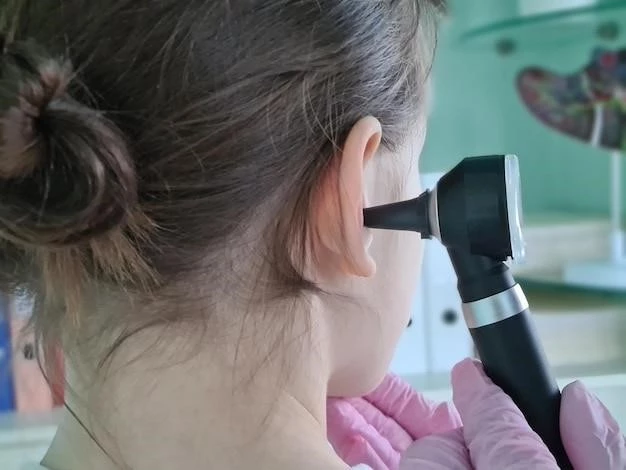Introduction to Oculoauriculofrontonasal Syndrome
The Oculoauriculofrontonasal Syndrome (OAFNS) is a rare disorder combining characteristics of frontonasal dysplasia and oculo-auriculo-vertebral spectrum features.
The Oculoauriculofrontonasal Syndrome (OAFNS) is a rare disorder that combines characteristics of frontonasal dysplasia and the oculo-auriculo-vertebral spectrum. It is characterized by anomalies in facial structure and developmental abnormalities in various regions, including the eyes, ears, nose, and mandible.

Characteristics of Oculoauriculofrontonasal Syndrome
The Oculoauriculofrontonasal Syndrome (OAFNS) is a rare disorder characterized by the association of frontonasal dysplasia and oculo-auriculo-vertebral spectrum features.
Frontonasal Dysplasia Features
Frontonasal dysplasia features of the Oculoauriculofrontonasal Syndrome (OAFNS) include widely spaced eyes, facial cleft, nose abnormalities, ear dysplasia, mandibular asymmetry, epibulbar dermoids, eyelid colobomas, and costovertebral anomalies.
Oculo-Auriculo-Vertebral Spectrum Features
The Oculoauriculofrontonasal Syndrome (OAFNS) presents with features from the Oculo-Auriculo-Vertebral Spectrum, such as preauricular ear tags, ear dysplasia, mandibular asymmetry, epibulbar dermoids, eyelid colobomas, and costovertebral anomalies.
Definition and Overview
The Oculoauriculofrontonasal Syndrome (OAFNS) is a rare disorder combining characteristics of frontonasal dysplasia and oculo-auriculo-vertebral spectrum features.
Coining of the Term Oculoauriculofrontonasal Syndrome
The term ″Oculoauriculofrontonasal Syndrome″ was first coined in 1981 by Carey and Yong to describe the unique combination of frontonasal dysplasia and oculo-auriculo-vertebral spectrum features seen in affected individuals.
Oculoauriculofrontonasal Syndrome (OAFNS) inheritance patterns are currently unknown, with researchers continuing to investigate the genetic basis of this rare disorder.
Modes of Inheritance
The inheritance patterns of Oculoauriculofrontonasal Syndrome (OAFNS) are currently unknown, with ongoing research aiming to uncover the genetic mechanisms underlying this rare disorder and its transmission within families.
Clinical Presentation and Diagnosis
Individuals with Oculoauriculofrontonasal Syndrome present a complex array of facial characteristics, including widely spaced eyes, a facial cleft, nose abnormalities, ear dysplasia, mandibular asymmetry, epibulbar dermoids, eyelid colobomas, and costovertebral anomalies. Diagnosis involves recognizing these distinctive clinical features.
Facial Characteristics and Diagnostic Criteria
Individuals with Oculoauriculofrontonasal Syndrome exhibit a distinctive range of facial features, including widely spaced eyes, facial cleft, nose abnormalities, ear dysplasia, mandibular asymmetry, epibulbar dermoids, eyelid colobomas, and costovertebral anomalies. Diagnosis involves recognizing these unique facial characteristics and understanding the diagnostic criteria associated with this syndrome.
Differential Diagnosis of Oculoauriculofrontonasal Syndrome
Oculoauriculofrontonasal Syndrome (OAFNS) must be distinguished from other syndromes with similar facial and developmental abnormalities to ensure accurate diagnosis and appropriate management.
Distinguishing Features from Other Syndromes
When diagnosing Oculoauriculofrontonasal Syndrome, it is crucial to differentiate it from similar syndromes to provide precise treatment and care based on the distinct characteristics of each condition.
Management and Treatment Approaches
The management of Oculoauriculofrontonasal Syndrome involves multidisciplinary care strategies tailored to address the complex needs of individuals with this rare disorder.
Multidisciplinary Care Strategies
Individuals with Oculoauriculofrontonasal Syndrome require comprehensive care from a multidisciplinary team to address their complex medical, developmental, and psychosocial needs effectively.
Prognosis and Long-Term Outlook
The long-term outlook for individuals with Oculoauriculofrontonasal Syndrome varies based on the severity of their features and the effectiveness of multidisciplinary care interventions in managing their unique needs.
Impact on Quality of Life
Oculoauriculofrontonasal Syndrome can significantly impact an individual’s quality of life due to the complex medical and developmental challenges associated with the syndrome, emphasizing the importance of tailored care and support resources.
Recent studies have focused on refining the clinical phenotype of Oculoauriculofrontonasal Syndrome and exploring potential nontraditional modes of inheritance, contributing to a better understanding of this rare disorder.
Recent Studies and Findings
Recent studies have focused on refining the clinical phenotype of Oculoauriculofrontonasal Syndrome and exploring potential nontraditional modes of inheritance, contributing to a better understanding of this rare disorder.
Case Studies and Patient Experiences
Case studies and patient experiences provide valuable insights into the impact and management of Oculoauriculofrontonasal Syndrome, offering individual perspectives on living with this rare disorder.
Insights from Reported Cases
Through reported cases and patient experiences, valuable insights are gained into the diverse manifestations and management of Oculoauriculofrontonasal Syndrome. These firsthand accounts shed light on the challenges individuals face and the strategies employed to navigate life with this rare condition.
Support Resources for Individuals and Families
Support groups and healthcare providers play a crucial role in offering assistance, guidance, and resources to individuals and families affected by Oculoauriculofrontonasal Syndrome.
Support Groups and Healthcare Providers
Support groups and healthcare providers are essential resources for individuals and families affected by Oculoauriculofrontonasal Syndrome, offering guidance, emotional support, and access to specialized care.

Conclusion and Future Directions in Oculoauriculofrontonasal Syndrome Research
As research continues to expand our understanding of Oculoauriculofrontonasal Syndrome, future directions aim to refine diagnostics, explore genetic underpinnings, and develop targeted interventions to enhance the management and quality of life for affected individuals.
